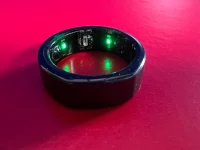Science. Earth’s most powerful physic machine gets back in action

FALL of 2008, CERN’s high-energy physicists ran into a problem. A faulty electronic connection at the Large Hadron Collider in Switzerland -the biggest, baddest, most powerful particle accelerator ever built- caused a couple of magnets to overheat and melt, triggering an explosion of pressurized helium gas.
The accident, which happened just nine days after the LHC turned on for the first time, led to months of delays. “It was pretty depressing when we broke the accelerator,” says Aaron Dominguez, a physicist at the University of Nebraska. “That was not a good day.”
Eventually, engineers fixed the LHC, and in 2012, physicists used it to do what the accelerator was always supposed to: Find the elusive subatomic particle called the Higgs boson. It worked, earning much fanfare and a Nobel Prize. But to prevent another accident, CERN’s engineers had run the LHC at only half its designed capability. Now, after a two-year hiatus in which engineers upgraded the accelerator to prevent such magnetic meltdowns, the LHC is set to smash protons together harder than ever—the way it was intended. “It’s like having a new accelerator, really,” Dominguez says. The increased power will mean more violent collisions that might create bigger, even rarer particles.
The first three-year run of the LHC was already record-breaking, slamming protons together with an energy of 7 teraelectron volts (a physicist’s unit of energy), equivalent to the 88,000-ton USS Harry S. Truman chugging along at about 6 miles per hour. All the protons at the LHC come from a small tank of hydrogen gas. As a series of machines accelerate them nearly to the speed of light, magnets steer the protons along a circular track almost 18 miles long. The accident that shut down the LHC in 2008 happened when a faulty wire connecting two of the magnets heated up. The magnet is a superconductor, so if it’s really cold, electrical current can speed through unimpeded, generating a strong magnetic field. But that faulty wire heated up the magnet, leaving the current to build up and boil away the liquid helium that’s supposed to keep the magnet cold. Within seconds, the accumulation of high-pressure helium gas exploded.
Engineers fixed the damage, replacing magnets along nearly 2,000 feet of the accelerator ring. During the recent shutdown, they made a slew of upgrades, but the most important one was just to make sure nothing blows up again. It took a year and a half for 300 people to reinforce the 10,000 connections between magnets with 27,000 pieces of copper. Now, if electric current starts to build up, the beefed-up connections will give all that energy someplace to go. The engineers also replaced 18 magnets that had worn out, upgraded electronics to make them more resistant to radiation, and added a new coating to the inside of the vacuum tube carrying the protons that should prevent stray electrons from forming a cloud that would interfere with the beam.
The plan was to turn on the beam this week, firing clusters of protons—each containing more than a hundred billion particles—at almost the speed of light. But on March 21, engineers found a short circuit, which could delay the restart as much as a few weeks. Once that’s fixed, it’ll be yet a few more weeks before they cross the beams and start smashing protons a billion times per second. That’s because the engineers have to warm up the magnets, slowly increasing the amount of current they can withstand. “It’s really like a runner,” says Jean-Phillippe Tock, an engineer at the LHC who was in charge of upgrading the magnetic connections. “You cannot immediately go and run 100 meters in less than 10 seconds.” The engineers will also test the electronics, the systems used to control the beam, and the system in place to dispose of the used protons
Then protons will finally begin slamming together, hopefully creating particles that physicists have only theorized to exist. At first, the collisions will be at 13 TeV. Only later, once engineers get a better feel for how the machine works, will they boost it to its maximum of 14 TeV. And higher energies mean more particles. The first run produced 500,000 Higgs bosons, but detectors only identified a few hundred of them for physicists to study. With more collisions, the LHC should create 10 times as many Higgs bosons. More data could be the key to discovering all kinds of new physics. The Higgs, for example, might be responsible for dark energy, the force that’s causing the expansion of the universe to accelerate.
Or physicists might find evidence for supersymmetry, a theory that says every particle has a massive partner. Supersymmetric particles might decay into a Higgs, so the Higgs could provide clues for what they’re like. Supersymmetric particles might also decay into another hypothesized particle called a neutralino, which might be what makes up dark matter, the mysterious mass that’s a quarter of the universe. For physicists, this is all exciting stuff.
On the other hand, they might not find anything at all. During its first run, before the Higgs, the LHC was certain to turn out some sort of discovery. If theorists were right, the LHC would produce the Higgs. But if no Higgs turned up, that meant theorists were wrong. Either way, physicists would learn something new. This time, despite the higher energy, nothing’s for sure. “No one can give you a 100 percent guarantee,” says Howard Haber, a theoretical physicist at UC Santa Cruz. “There’s nothing missing in the same sense that the Higgs boson was missing.” Many of the theories predicting dark matter or supersymmetric particles, for example, are ambiguous. If the LHC doesn’t find these particles, it doesn’t necessarily mean the theory is wrong. It might mean you just need a more powerful accelerator.
For now, though, the new-and-improved LHC will do just fine. After all, physicists are finally getting the accelerator they’ve always wanted. (Wired)










